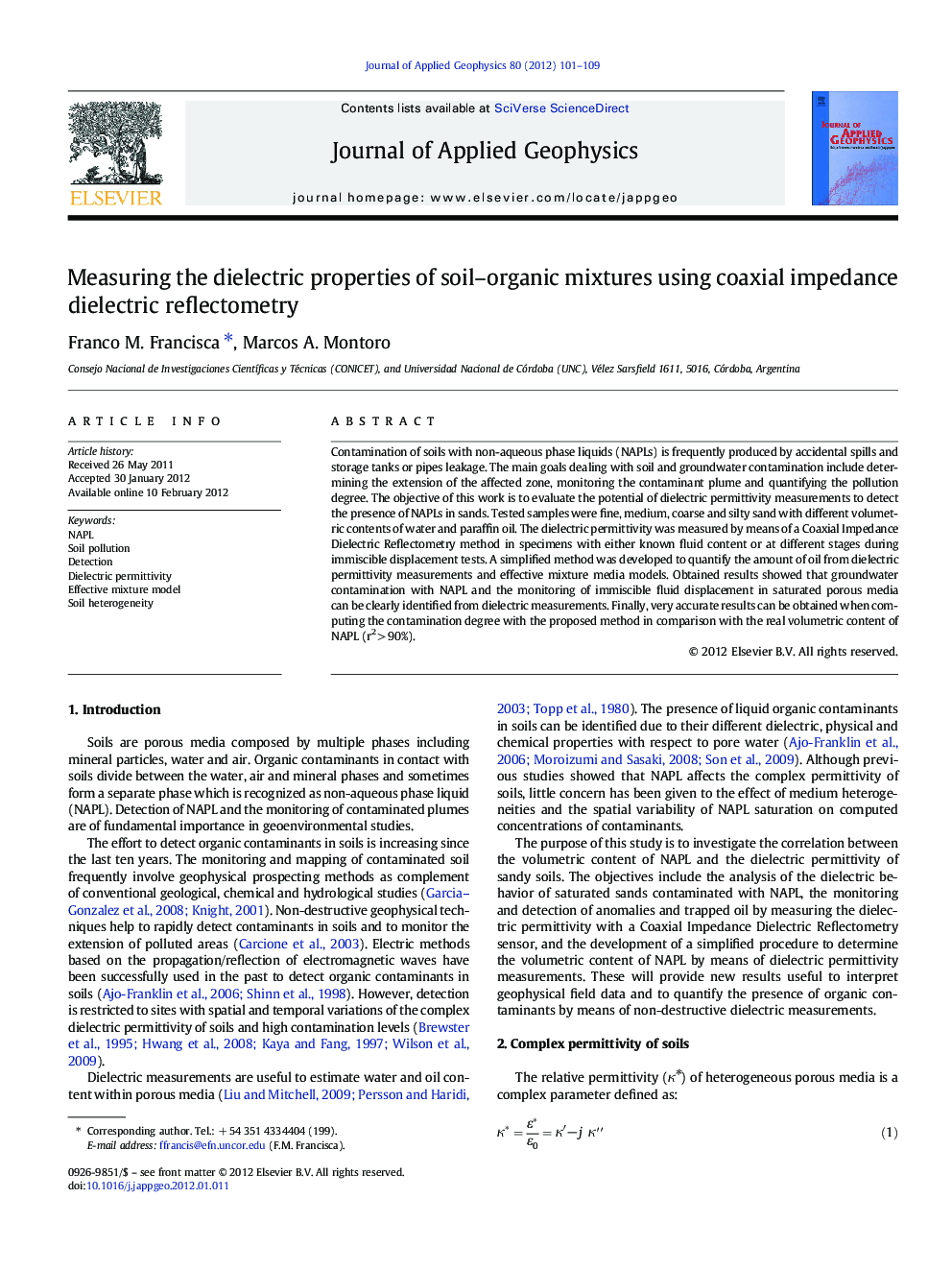| Article ID | Journal | Published Year | Pages | File Type |
|---|---|---|---|---|
| 4740656 | Journal of Applied Geophysics | 2012 | 9 Pages |
Contamination of soils with non-aqueous phase liquids (NAPLs) is frequently produced by accidental spills and storage tanks or pipes leakage. The main goals dealing with soil and groundwater contamination include determining the extension of the affected zone, monitoring the contaminant plume and quantifying the pollution degree. The objective of this work is to evaluate the potential of dielectric permittivity measurements to detect the presence of NAPLs in sands. Tested samples were fine, medium, coarse and silty sand with different volumetric contents of water and paraffin oil. The dielectric permittivity was measured by means of a Coaxial Impedance Dielectric Reflectometry method in specimens with either known fluid content or at different stages during immiscible displacement tests. A simplified method was developed to quantify the amount of oil from dielectric permittivity measurements and effective mixture media models. Obtained results showed that groundwater contamination with NAPL and the monitoring of immiscible fluid displacement in saturated porous media can be clearly identified from dielectric measurements. Finally, very accurate results can be obtained when computing the contamination degree with the proposed method in comparison with the real volumetric content of NAPL (r2 > 90%).
► Contaminant level controls the effective dielectric permittivity of soils. ► NAPL content can be computed from dielectric permittivity measurements. ► Dielectric measurements allow detecting ganglia, interfaces and oil saturation. ► Soil heterogeneities govern immiscible displacement inside soil pores. ► Spatial variability of NAPL can be detected by means of dielectric measurements.
